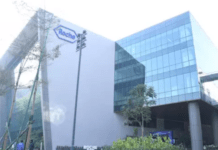Teamwork is an essential component of any organisation. Teams are designed to work together towards common goals, to pool resources and ideas, and to achieve results that individuals working alone cannot accomplish. However, poor team dynamics can have a negative impact on the individual performance of employees / team members.
How is poor team dynamics harmful?
Amidst poor team dynamics, individual employees may experience various adverse effects, including decreased job satisfaction, reduced motivation and diminished productivity.
Output
As per Kamlesh Dangi, group head, human resources, InCred, “In most jobs, employees work as a team to achieve specific outcomes or goals. Therefore, an employee’s output is often dependent on someone else’s input, and their output may also serve as input for another team member.”
“Negative team dynamics can create a ripple effect that can ultimately impact the team’s success and overall performance”
Kamlesh Dangi, group head, human resources, InCred
Morale
Dangi goes on to add that negative team dynamics, such as a toxic culture or undesirable outcomes, can impact the team’s morale, which will ultimately affect their performance. The impact may not be immediate, but it will definitely be noticeable in the long term.
Atmosphere
When team members do not communicate effectively or do not respect each other’s opinions, it can lead to an unpleasant work atmosphere. This can cause employees to feel stressed, anxious, or frustrated, leading to decreased productivity and motivation.
Quality
Poor team dynamics can lead to misunderstandings and conflicts among team members. This can lead to delays in completing projects and affect the quality of the work produced. When employees are not working well together, it can also create tension and unease, causing them to feel unhappy with their job and their contribution to the team.
Clarity
Another way poor team dynamics can affect individual employees is by creating confusion about roles and responsibilities. When team members are unclear about their roles or responsibilities, it can lead to duplicate efforts or missed deadlines. It can also lead to misunderstandings about who is responsible for what, leading to finger pointing and blame shifting.
“Poor team dynamics can negatively impact motivation, which can ultimately affect the success of the project. It is essential to foster a collaborative and cohesive team environment to maximise individual and team performance”
Samir Bhiwapurkar, head of HR and general administration, Japfa Comfeed
Motivation
Samir Bhiwapurkar, head of HR and general administration, Japfa Comfeed, agrees that team dynamics definitely plays a critical role in determining individual employee performance. He explains further with the help of a hypothetical situation, where a team is working on a project, but the project fails due to poor team dynamics. In such cases, despite giving 100 per cent, as individuals their performance on the whole is negatively impacted. In the next project, the individual employee’s motivation may be low due to the negative experience of working with a team. “This lack of motivation can further affect the project’s success,” points out Bhiwapurkar.
“Poor team dynamics can negatively impact motivation, which can ultimately affect the success of the project. It is essential to foster a collaborative and cohesive team environment to maximise individual and team performance,” opines Bhiwapurkar.
Creativity
Furthermore, poor team dynamics, may see employees finding it challenging to express their opinions or ideas freely. This can lead to groupthink, where team members may not question or challenge ideas, leading to a lack of creativity and innovation. When employees do not feel comfortable expressing their opinions, they may become disengaged, leading to decreased motivation and productivity.
Jacob Jacob, GCHRO, Malabar Group, says that team performance is critical in any corporate setting, and every team member’s contribution matters. While one exceptional performer can make a difference, it is ultimately the team’s collective effort that determines success. Each team member must perform at their optimal level to ensure the growth and success of the enterprise.
“The success of teamwork relies on every member’s ability to contribute to the team’s goals. If one member is not performing at their best, it can have a negative impact on the entire team’s performance”
Jacob Jacob, GCHRO, Malabar Group
However, Jacob believes a few underperforming individuals can have a significant impact on the team’s overall performance. “The success of teamwork relies on every member’s ability to contribute to the team’s goals. If one member is not performing at their best, it can have a negative impact on the entire team’s performance,” points out Jacob.
How can team dynamics be improved?
To address poor team dynamics, organisations should invest in team-building activities to help team members develop better communication skills, build trust and learn how to work together more effectively.
Leaders can also foster a culture of respect and encourage open communication, ensuring that team members feel comfortable expressing their opinions and concerns. Additionally, organisations can provide training and development opportunities to help employees develop the skills necessary to work successfully in a team environment.
Poor team dynamics can significantly affect individual employee performance. A toxic work environment, misunderstandings about roles and responsibilities and reduced creativity and innovation can all arise from poor team dynamics.
“It is crucial to ensure that team dynamics is positive and conducive to success to maximise individual employee performance. Negative team dynamics can create a ripple effect that can ultimately impact the team’s success and overall performance,” explains Dangi.
According to Jacob, “One rotten apple can spoil the whole basket. Detrimental performance by a few team members can affect the entire team’s productivity and success. Optimal performance from each team member is necessary to achieve better productivity and success for the enterprise.”
Value our content... contribute towards our growth. Even a small contribution a month would be of great help for us.
Since eight years, we have been serving the industry through daily news and stories. Our content is free for all and we plan to keep it that way.
Support HRKatha. Pay Here (All it takes is a minute)







































